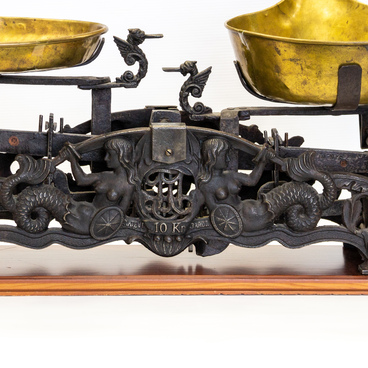The fan presented in the exhibition consists of 18 carved sticks fastened with a silk braid at the top and a metal rivet pin at the bottom.
The history of the fan goes back to the distant past. According to an ancient legend, about three thousand years ago, the Chinese empress Wong wanted to cool herself and tore a leaf from a tree and began to fan herself with it. Fans similar in shape to this leaf began to be made: first from palm leaves, and then from beautiful long and fluffy peacock feathers. Fans were not an exclusively Chinese invention — they were also used in ancient Egypt. Historians believe that the first fans appeared about 9 thousand years ago. However, the earliest archaeological finds date back to 770–256 BC.
Scientists have established that in the 5th–3rd centuries BC, large fans were used by all classes of the Chinese population — whether they be emperor or slave. If the latter used fans to help them withstand the heat during work, the former enjoyed resting under them. To make fans comfortable to hold in one’s hands, their size was reduced. And so the folding fan appeared. Folding fans became widespread somewhat later in Japan. Empresses and emperors used them. To this day, a fan is considered to be a symbol of well-being and good luck in Japanese and Chinese cultures. Gradually, fans were imported to European countries, and then made their way to Russia.
In the 18th–19th centuries, fans were no longer used for their original purpose — to save from the heat — and became a must-have accessory for balls and social receptions. The fan demonstrated the owner’s status. Feathers, precious stones, gold, silver, mother-of-pearl and even tortoise shells were used for making fans. Sometimes they featured a secret compartment for notes in the handle. There were also fans with mirrors for observing a person of interest without turning one’s head. Other fans had slits for the same purposes. The leaves of such fans were made of fine, expensive silk and were decorated with Chinese characters, paintings and poems. Certain fans were carefully selected for various events and dresses. Ladies and gentlemen used fans for communicating without words from a distance.
At the beginning of the 20th century, this women’s accessory went out of use. In the 21st century, however, the fan experiences a revival — they can be seen at concerts or dinner parties.


